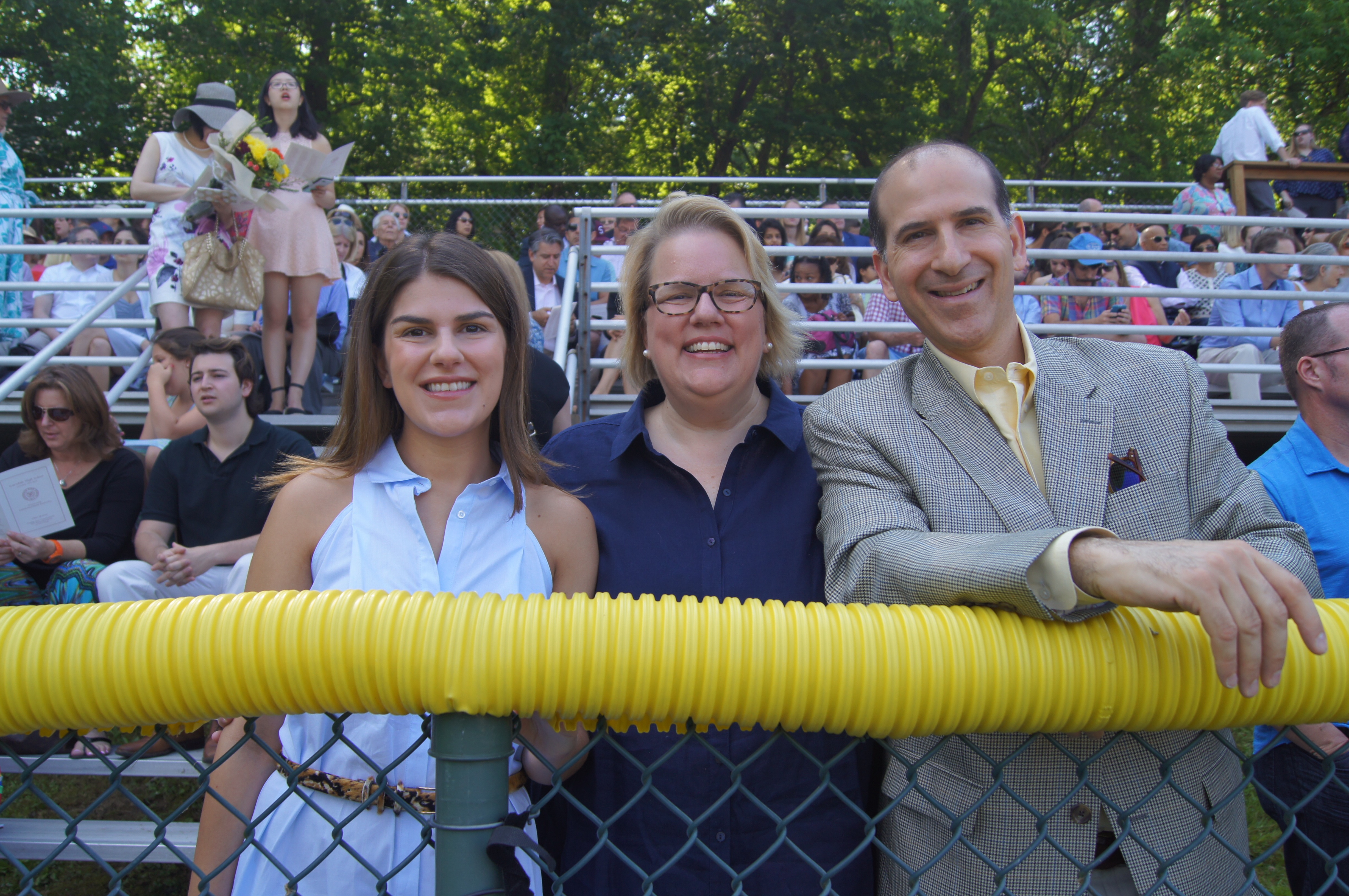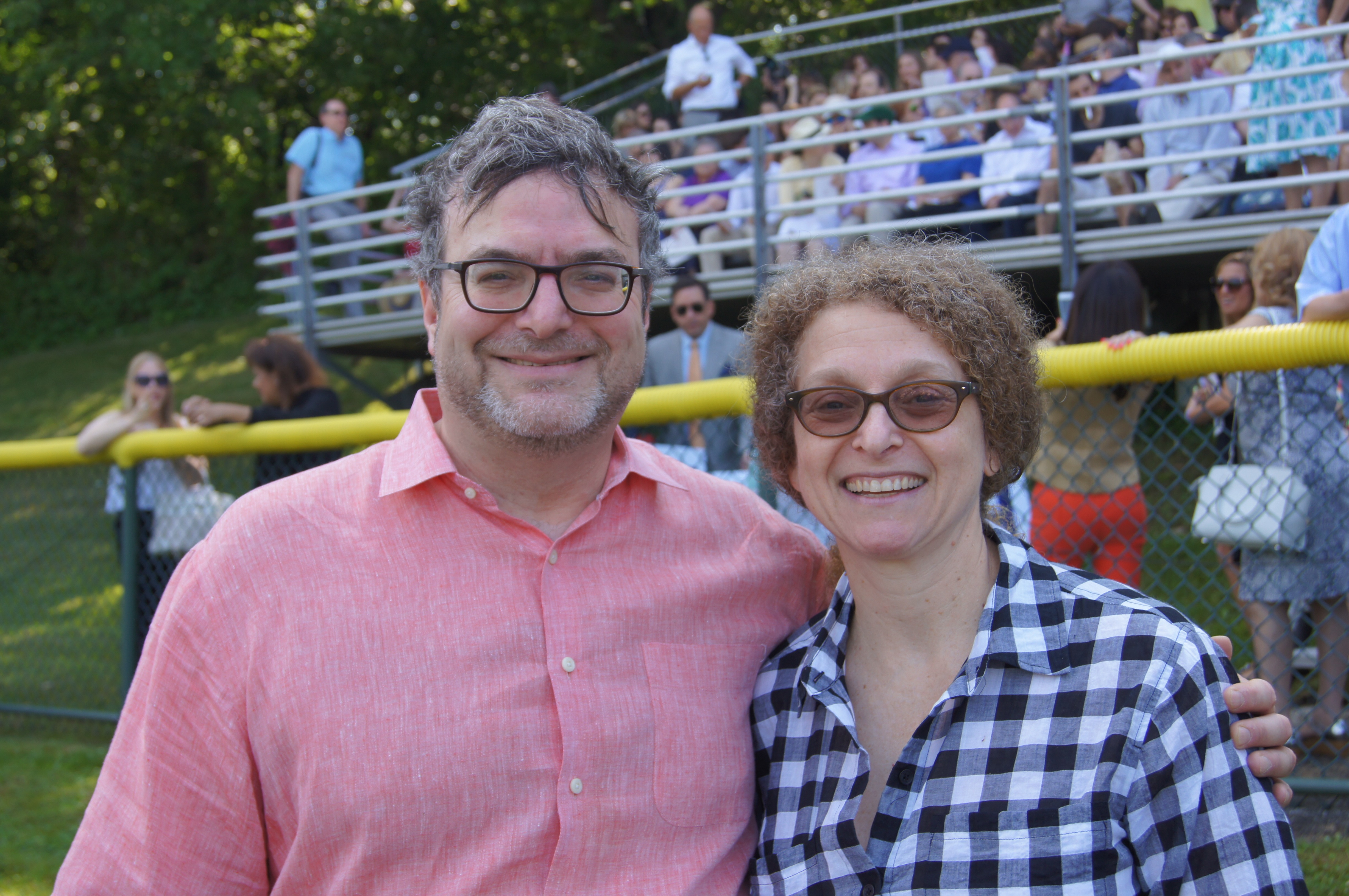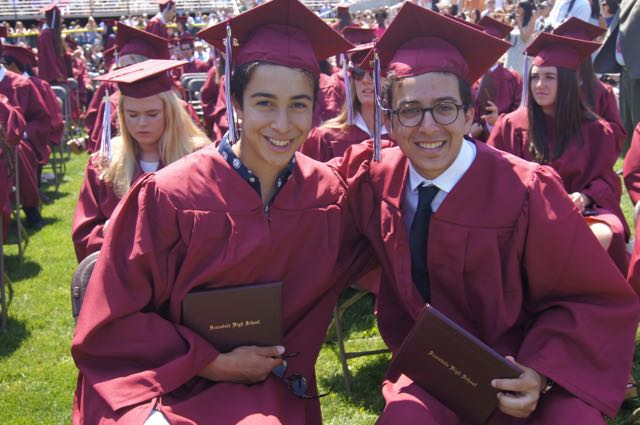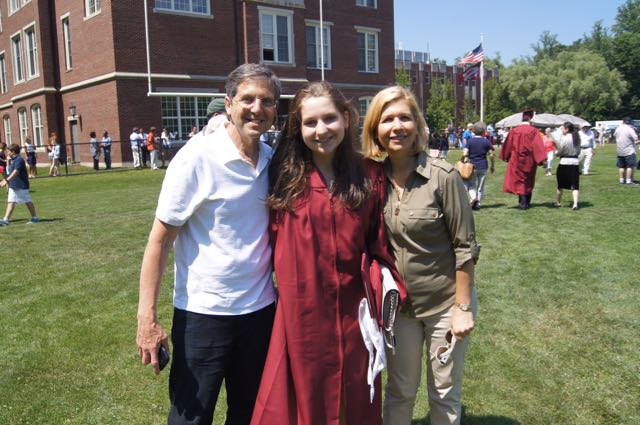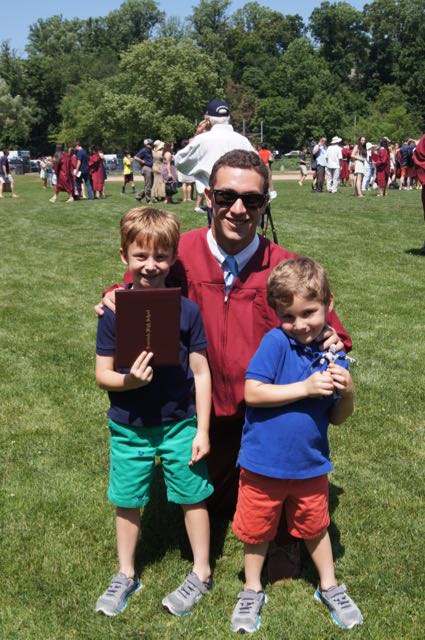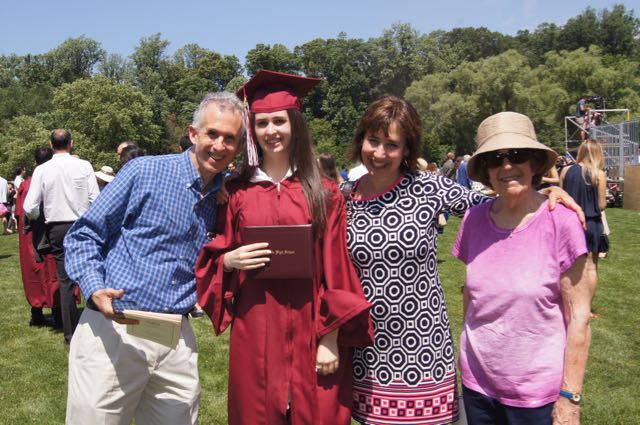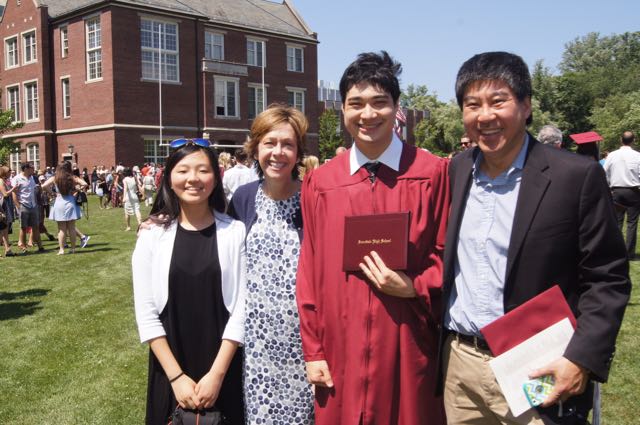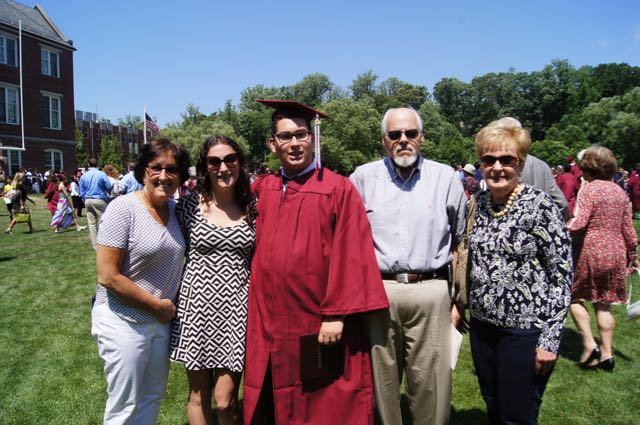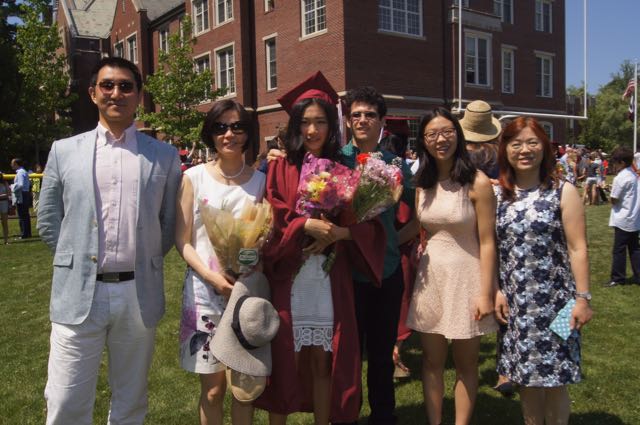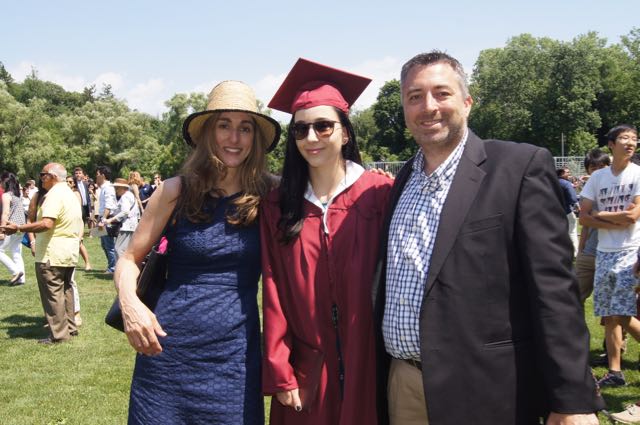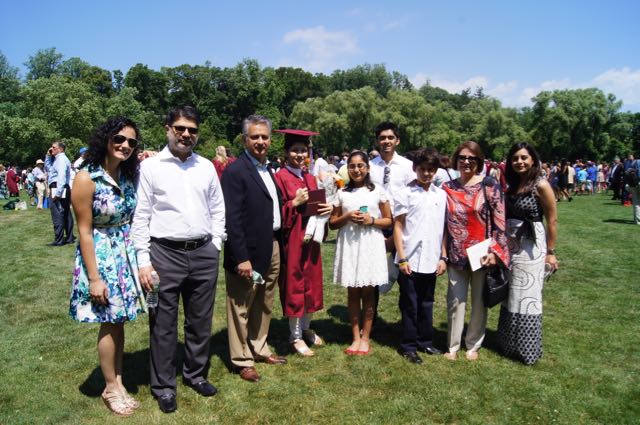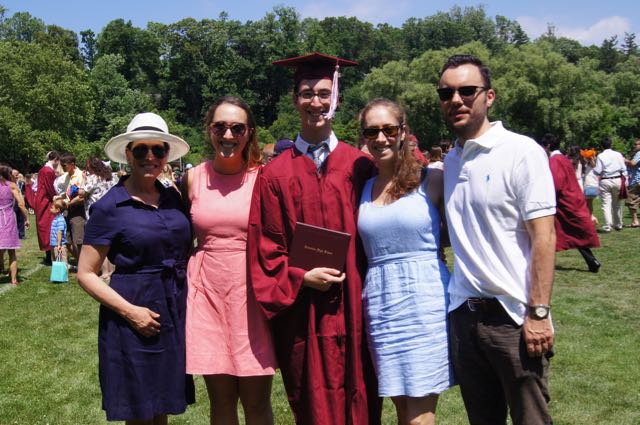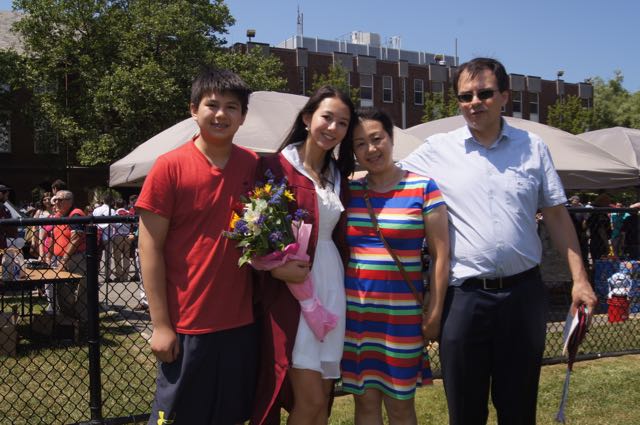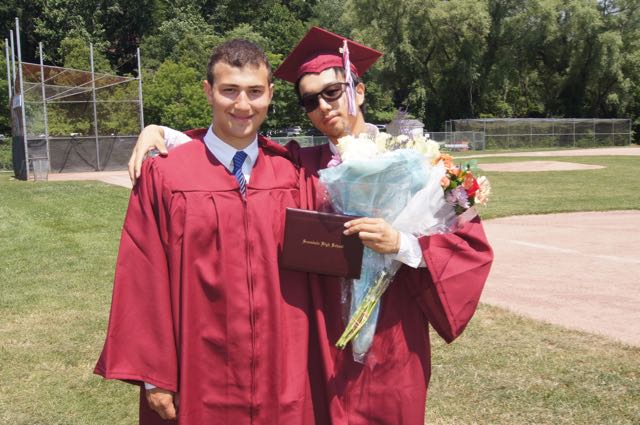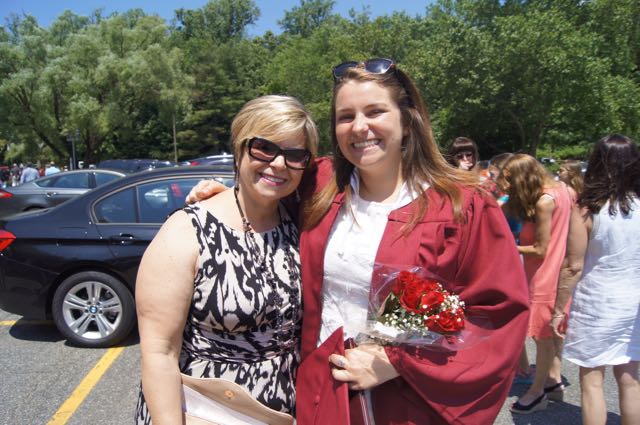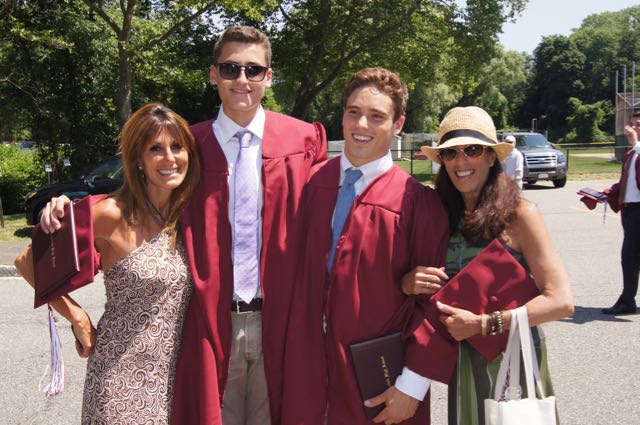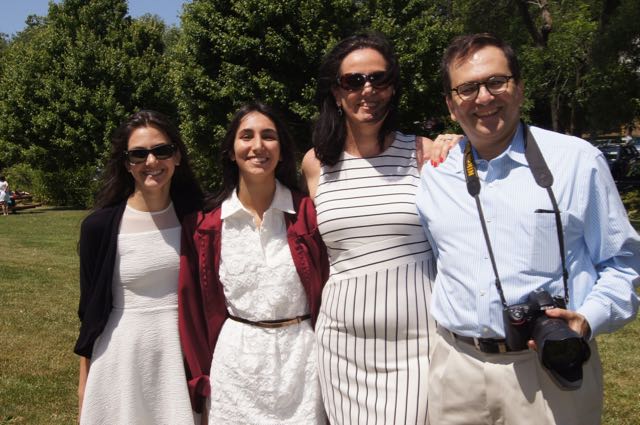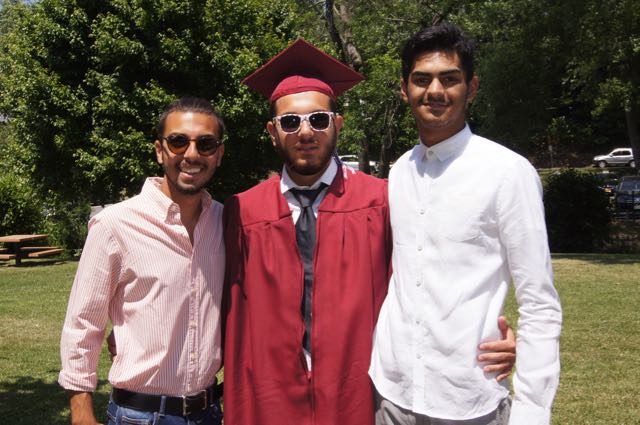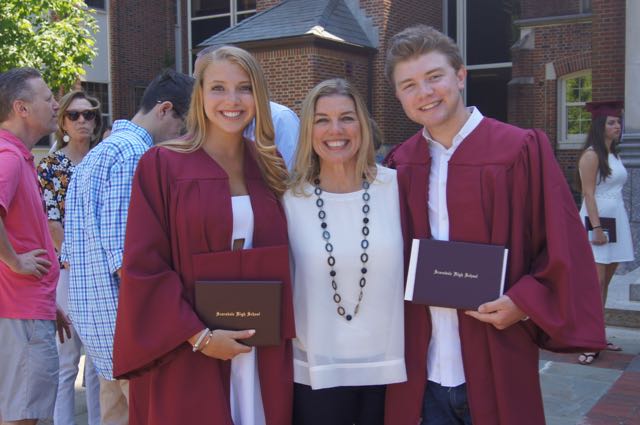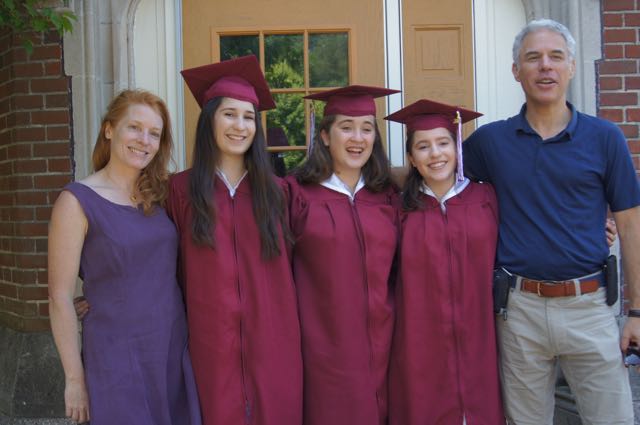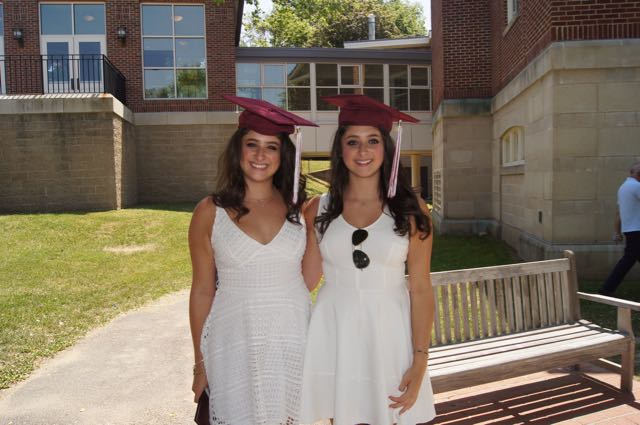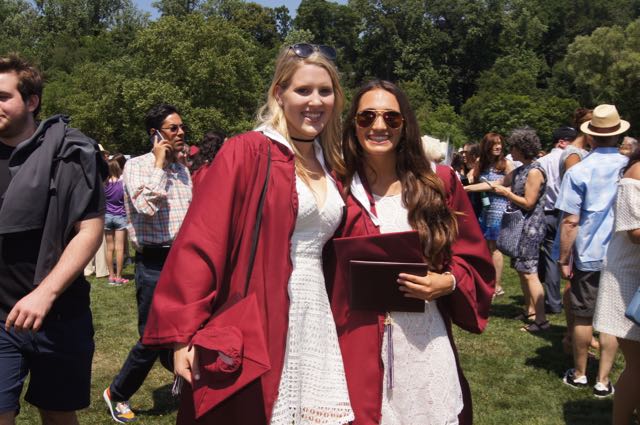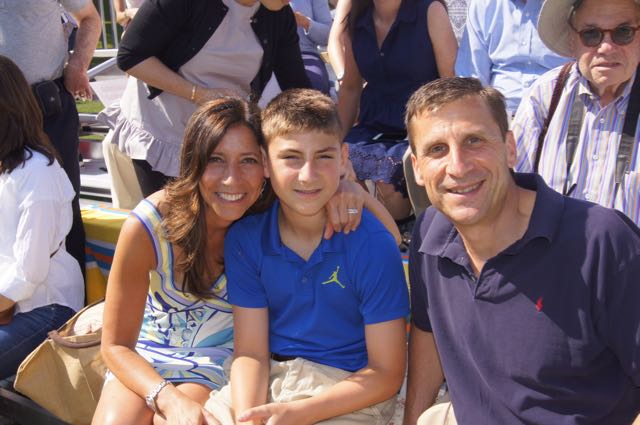Village Publishes List of Unclaimed Funds - Is Your Name on It?
- Details
- Written by: Joanne Wallenstein
- Hits: 6613
 The Village of Scarsdale recently published a list of people and businesses that have unclaimed funds held by the Village. Many of the funds consist of deposits for building permits or engineering department requirements. The funds date from 1979 to 2007 and have been declared abandoned. If your name is in the list you should contact the Village Treasurer at [email protected] or call 914-722-1170 to claim them.
The Village of Scarsdale recently published a list of people and businesses that have unclaimed funds held by the Village. Many of the funds consist of deposits for building permits or engineering department requirements. The funds date from 1979 to 2007 and have been declared abandoned. If your name is in the list you should contact the Village Treasurer at [email protected] or call 914-722-1170 to claim them.
Village Treasurer Mary Lou McClure says the unclaimed funds amounts range from a few hundred to thousands of dollars.
Check out the list here to see if you are owed money from Scarsdale.
http://scarsdale10583.com/images/pdf/UnclaimedFunds2016.pdf
The Class of 2016 Has Its Day in the Sun
- Details
- Written by: Joanne Wallenstein
- Hits: 9139
 There could not have been a more perfect June day for a graduation –- cool, sunny, dry and comfortable for the hundreds of parents, grandparents, teachers, friends and supporters who came to cheer on the 356 graduates in the Scarsdale High School Class of 2016.
There could not have been a more perfect June day for a graduation –- cool, sunny, dry and comfortable for the hundreds of parents, grandparents, teachers, friends and supporters who came to cheer on the 356 graduates in the Scarsdale High School Class of 2016.
Before the processional, the spirited 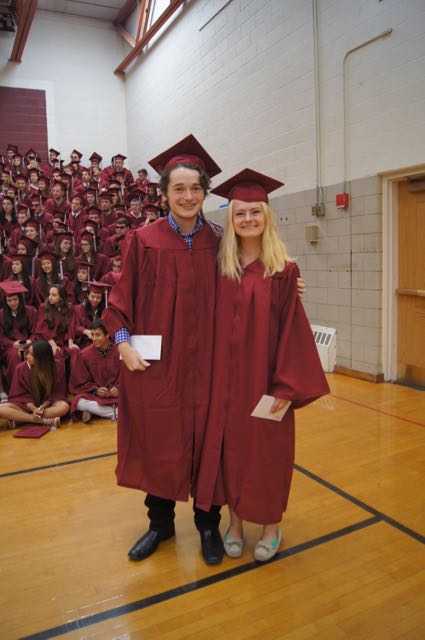 but well-behaved group gathered in the gym and honored two class members who were singled out for marching to their own drummers and being their own person. Ben Isaacs Stevens and Signe Louise Porsborg Forsingdal both looked surprised but pleased to be recognized. Assistant Principal Sue Peppers told the class that this was her last graduation after 28 years at SHS and advised the students to "stay close to their friends."
but well-behaved group gathered in the gym and honored two class members who were singled out for marching to their own drummers and being their own person. Ben Isaacs Stevens and Signe Louise Porsborg Forsingdal both looked surprised but pleased to be recognized. Assistant Principal Sue Peppers told the class that this was her last graduation after 28 years at SHS and advised the students to "stay close to their friends."
With that they lined up in alphabetical order and marched out to Dean Field to the sounds of Pomp and Circumstance played by the Symphonic Band under the baton of conductor Jason Noble.
School Board President Lee Maude advised the students to "try something new," do something you're not good at," and to "experience all life has to offer," before ceding her time to Board V.P. William Natbony who had a daughter in the graduating class.
 A child actor, Natbony drew an analogy between the high school experience and a theatrical play. He said, "There's something really special about High School -- I like to think of its as a four year long drama club production. As parents we can attest that there WAS a lot of drama in that production. There are many rehearsals -- some go really well, while others not so well. Over the four years of rehearsal, the actors, musicians and tech crew bask in their accomplishments and learn from their mistakes along the way. Teachers, counselors and parents provide notes along the way, giving the production structure and imparting valuable knowledge to those who participate. And then there are the friendships -- both the nurturing of old friendships and the making of new ones -- friendships that result in a collaborative and continuing performance in a show called "life."
A child actor, Natbony drew an analogy between the high school experience and a theatrical play. He said, "There's something really special about High School -- I like to think of its as a four year long drama club production. As parents we can attest that there WAS a lot of drama in that production. There are many rehearsals -- some go really well, while others not so well. Over the four years of rehearsal, the actors, musicians and tech crew bask in their accomplishments and learn from their mistakes along the way. Teachers, counselors and parents provide notes along the way, giving the production structure and imparting valuable knowledge to those who participate. And then there are the friendships -- both the nurturing of old friendships and the making of new ones -- friendships that result in a collaborative and continuing performance in a show called "life."
He continued, "In As You Like It, 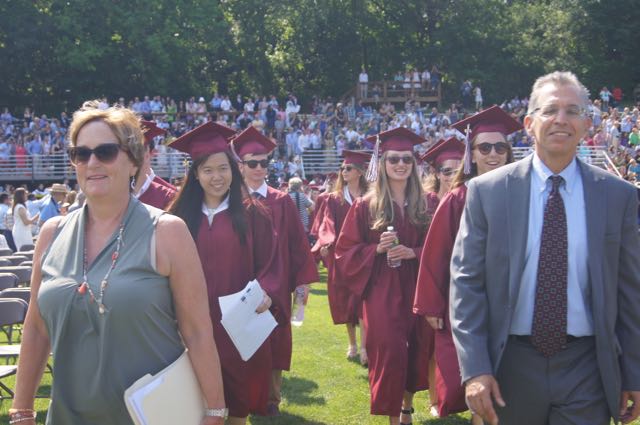 Shakespeare wrote that "all the world's a stage, and all the men and women merely players." I would suggest to the Class of 2016 that YOU are those "players" and you are about to set foot on that world stage. You will have a vast audience -- your family, your peers, your colleagues and the world at large. You will have the power to influence, the ability to create, the knowledge to innovate and the persuasiveness to move people. Do not be afraid to use your voice as you perform your various life roles.
Shakespeare wrote that "all the world's a stage, and all the men and women merely players." I would suggest to the Class of 2016 that YOU are those "players" and you are about to set foot on that world stage. You will have a vast audience -- your family, your peers, your colleagues and the world at large. You will have the power to influence, the ability to create, the knowledge to innovate and the persuasiveness to move people. Do not be afraid to use your voice as you perform your various life roles. 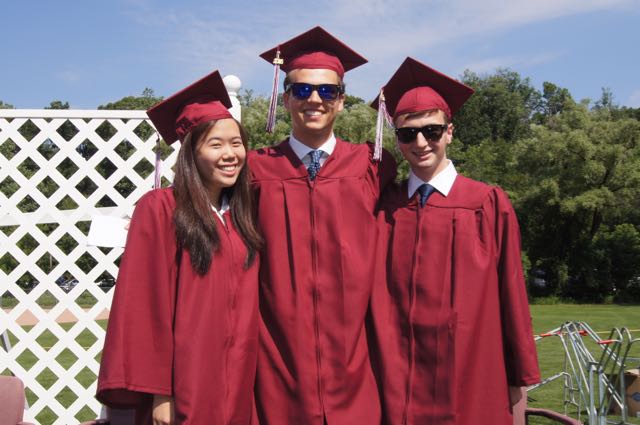 Be strong in your convictions and compassionate in your actions. Never lose sight of your own personal potential or your creative voice. Never underestimate your talent and your ability to spark change -- find your passion, perform a meaningful role using that passion, and your reviews will be great. I also urge you to perform well the role of representing Scarsdale in the global community and keeping true to our District's motto of "non sibi" -- not for one's self alone...... Today is the "opening night" of your
Be strong in your convictions and compassionate in your actions. Never lose sight of your own personal potential or your creative voice. Never underestimate your talent and your ability to spark change -- find your passion, perform a meaningful role using that passion, and your reviews will be great. I also urge you to perform well the role of representing Scarsdale in the global community and keeping true to our District's motto of "non sibi" -- not for one's self alone...... Today is the "opening night" of your  next show. The rehearsals are over. The audience has filed in. The stage manager has called "places". The overture is finished. The curtain is rising. The lights are coming up. The spotlight is on you. And you're on. Break a leg!"
next show. The rehearsals are over. The audience has filed in. The stage manager has called "places". The overture is finished. The curtain is rising. The lights are coming up. The spotlight is on you. And you're on. Break a leg!"
It was a bittersweet day for class advisors Larry Brown and Ann Liptak who retired at the end of the school year. Charlie Musoff thanked Brown, saying he "encouraged us to be our most sarcastic selves!" He called Brown a "beloved teacher," who always helped the class do what they wanted to do and told Brown to "enjoy some more golf." Matthes Drescher thanked Ms. Liptak for "being there for everyone," and helping the class through everything from Junior Olympics to the Senior Class Play. He said, "To know Ms. Liptak is to know that you're not alone."
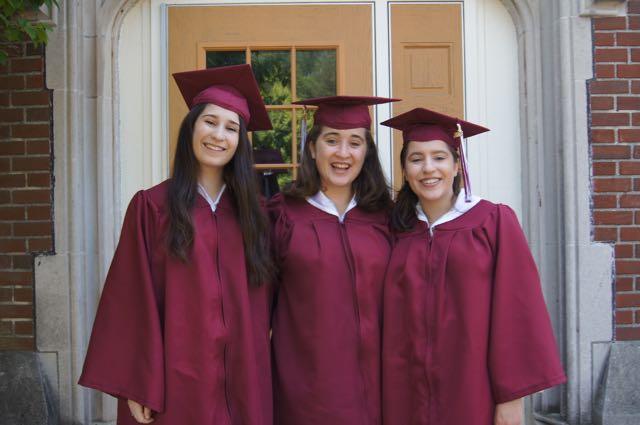 The two advisors took the stage and thanked the class for showing them a few things ... like "The Brian," the best sandwich at Nonni's, and the second meaning of words like "darty, dank (cool) and word (sounds good)." They reminisced about dancing the night away at the best senior prom ever and ending the year with a colored powder throw.
The two advisors took the stage and thanked the class for showing them a few things ... like "The Brian," the best sandwich at Nonni's, and the second meaning of words like "darty, dank (cool) and word (sounds good)." They reminisced about dancing the night away at the best senior prom ever and ending the year with a colored powder throw.
Brown remembered a favorite student who graduated in 2005 and passed away last week at the age of 29. In his year book, he quoted Derek Zoolander saying, "I'm pretty sure there's a lot more to life than being really, really, ridiculously good looking. And I plan on finding out what that is."
Brown offered the following advice on what we could learn from this young man's life:
- Live large. The world is your oyster, and you should either go big or go home.
- Don't sweat the small stuff. Life is simply too short to worry about meaningless things, particularly things that are out of your control.
- Be forgiving. We are all human, prone to making mistakes. Forgive the acts of others as you would like to be forgiven.
- Embrace the world around you. As Ann said earlier, we are all in this together, so whether it is your community, your nation or the entire world, give back to others.
- And finally, never postpone joy. Our time together as friends and family is short and precious, so Carpe Diem!
Ann Liptak choked up as she quoted Walt Whitman saying,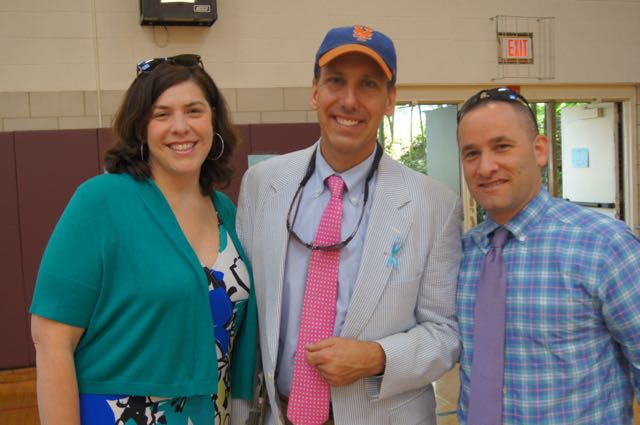
I tramp a perpetual journey,
But each man and each woman of you I lead upon a knoll,
My left hand hooking you round the waist,
My right hand pointing to landscapes of continents and the public road.
Not I, not any one else can travel that road for you,
You must travel it for yourself.
It is not far, it is within reach ..."
They ended by saying, "We say goodbye with beautiful memories in our heards and we say good to you with tears in our eyes." Many in the audience choked back tears themselves.
Class VP Owen Marsh thanked everyone at the school, from the principals to the custodian, the secretaries, nurses, library staff and aids for keeping the school running smoothly.
Class President Clare Chan said it was difficult to find words to name this feeling. She said she felt like an Emoji with eyes and no mouth and captured the moment with the word WOW. Putting on the gown, she said, gave her goosebumps.
She remembered her friend Michael Ludwig who passed away after fourth grade and would have been a member of the graduating class. She called him "determined and optimistic" and said he always smiled. She also remembered Paulie Jimenez, a student at Greenacres Elementary School who died this year and said that the Class of 2016 would donate the balance of their funds to the Ludwig Foundation and Paulie Strong. She encouraged her classmates to highlight the good times they had together, and to never apologize for who they are. She ended with a serenade from High School Musical, singing "We're all ready for the start of something new!"
Principal Ken Bonamo told the class that he also started his tenure at Scarsdale High School four years ago too. He reminded the students that it's easy to see tragedy and say "not my problem," but urged them to take on big challenges and to respond to hate with love. He told the students, "You are out best hope." He advised them to "study what you love and follow your heart," and wished the class a wonderful graduation.
With that, Superintendent Thomas Hagerman bid the class to "Go forth to grow in wisdom and to serve the common good, non sibi."
If you would like to add your grads picture to our photo gallery, please email it to [email protected].
SHS PTA Toasts Retiring Staffers
- Details
- Written by: Joanne Wallenstein
- Hits: 6680
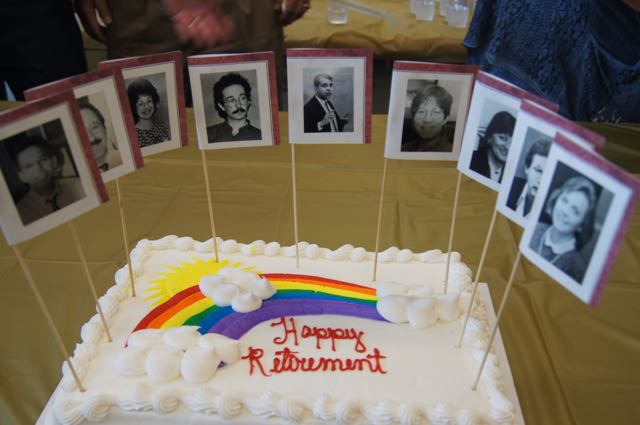 On Monday June 20, the SHS PTA arranged a small celebration for a group of veteran staffers who will retire at the end of the school year. Well-loved and well known, these teachers and Assistant Principal Sue Peppers have had an impact on the thousands of students they have taught. The PTA ordered a cake bearing pictures of the teachers as they were when they came to the school years ago – and PTA President Margaret Smith gave lovely – and sometimes amusing --tributes to each one. We can't say it any better than she did – so below are her remarks to the nine retirees who have been at the school for a collective 257 years.
On Monday June 20, the SHS PTA arranged a small celebration for a group of veteran staffers who will retire at the end of the school year. Well-loved and well known, these teachers and Assistant Principal Sue Peppers have had an impact on the thousands of students they have taught. The PTA ordered a cake bearing pictures of the teachers as they were when they came to the school years ago – and PTA President Margaret Smith gave lovely – and sometimes amusing --tributes to each one. We can't say it any better than she did – so below are her remarks to the nine retirees who have been at the school for a collective 257 years.
Here are Margaret Smith's remarks:
Good afternoon. I would like to welcome everyone here and thank you all for coming to celebrate our retirees and wish them well as they are about to embark on a new phase of their lives. I would like to introduce them to everyone now, as none of us, I believe, has had the pleasure of knowing all of them as teachers to our own kids. When I call your name, could you please stand?
Larry Brown
Roger Cappucci
Sandra Cisco
Tom Conrad
Ann Liptak
Sue Peppers
Paul Sheehey
Beth Schoenbrun
Ihor Szkolar
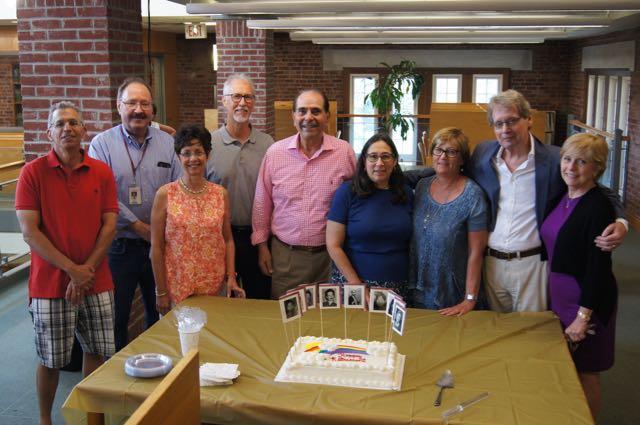
Welcome to each of you.
This is the part of the school year that I have come to dread. Not because I have to give retirement speeches, but because I really feel an aversion to saying goodbye at the end of the year. This has been the case since my kids were in grade school. I think it's because, no matter how exciting the next stage promises to be, we must loosen valued connections that we have formed through time and teamwork over the course of the school year. Those precious relationships will lodge in our hearts and our memories, never to be replicated, though others will take their place in our lives over time. That's how I feel again this year, and for nine good reasons, all standing in front of us in this room. Furthermore, I myself am retiring this year, as my youngest child is graduating this Friday. My retirement, however, is not really a matter of choice; it's more like I'm being asked to leave.
Today, we are celebrating the relationships we have had and the contributions that have been made by eight of our educators and one educator-turned-administrator who have been with us for a collective 257 years! Wow! Their individual years of service range from 13 for someone who made teaching his encore act, to a whopping 50 for a teacher who devoted his all to the multiple generations of students who came through his doors. Together, I conservatively estimate that they have taught more than 27,000 students. That's like teaching all of Scarsdale one and half times over. And think of the ripple effect of their teaching!
The Scarsdale community is unique in that so many people who have students in the school system were themselves students here. This is not the case in many other locales. In my own experience, I grew up in a small town in southern Minnesota, and I was ready to leave upon high school graduation, with no intention of returning to settle down and raise a family when the time came. My husband and I chose Scarsdale for two very good reasons. One was that his golf club was situated here. Hey, that's as good a reason as any when you don't yet have children. The other one, of course, was the sterling reputation of the schools. Our retirees today are some of the very people upon whom that reputation was built. Mr. Cappucci, with 50 years of teaching at Scarsdale to his credit, Mr. Sheehy, with 37 years under his belt, Mr. Conrad with 36, just to name a few of those we honor today, were some of the teachers that erstwhile Scarsdale grads surely thought of when it was time for them to pick a community in which to raise their families. And they chose to return to Scarsdale to put their own children into the hands of these very teachers. What a vote of confidence! And so well deserved, proven out again and again.
Not everyone who wished to be here today could be, and so I have gathered up some reminiscences and comments from your current and former students, and some of their parents, who can really show us the kind of exemplary teachers you have been in the classroom and in the school as a whole. I would like to share them with you now.
Laurence Brown
Larry, you have been at Scarsdale High School for 13 years, having previously enjoyed a successful career in the financial industry. You brought a real-world sensibility to your classroom, as well as acting as a class advisor to numerous classes and being a faculty member on the PTA Executive board. Here's what some of your students and their parents had to say:
Larry Brown is one of the most caring teachers at SHS. He absolutely loves his kids and he is personally invested in them both as scholars and people. He is a mentor as well as a friend and is a one of a kind teacher. Larry makes this school fun and he will be sorely missed.
Mr. Brown was, simply but truly, an extraordinary teacher. He made me feel like I could do anything, and be anything. He made policy discussions come alive. He taught us and pushed us, and he made us want to teach and push ourselves.
Larry, thank you, from the bottom of my heart. Thank you for your wicked sense of humor. Thank you for believing in us. Thank you for bringing it every day. More than any other high school teacher (probably any teacher, period), you have made me the person I am today. God bless you and your family - you will be missed.
Mr Brown truly devoted himself to the class of 2016 and was always such a positive and proactive force. During High School Musical he was absolutely beaming, laughed out loud and might have had tears of happiness once or twice. He was such a key in our kids' lives and development. Thank you!
Roger Cappucci
Roger, you are an institution at Scarsdale, with 50 years of teaching to your credit. People with whom I serve on various committees who had you as a teacher can still recite your formula for differential equations. Here are a few comments from your past students.
Having Mr. Capucci as a teacher was one of the best experiences I had at SHS!
He was the only teacher who could make calculus both academic and captivating for my class.
I will remember Mr. Capucci not just for his amazing talent of teaching, but also for his generous and kind heart.
Mr. Cappucci is so enthusiastic and always wants to make sure the student is achieving his best. In class he would always write something on the board and then point to something outside so that we would all look away and then he would finish the equation on the board so that it was finished when we turned around.
Sandra Cisco
Sandra, you bring the foreign and exotic into the school and make it part of the students' daily living experience. You have graced these halls for 22 years, and your students are a most appreciative lot.
Senora Cisco truly cares about her students' well being. When I passed out in her class she literally caught me before I fell on the floor and revived me. I've never felt so prepared for a test as I felt for the final in her class. She was always willing to help out if you asked for help. She's like everyone's mom. I frequently stayed to chat with her through lunch because she's so interesting and fun and I loved talking to her.
She was very funny and enthusiastic and she made every class fun. She would always dance and sing and get the students engaged in the lesson.
She was one of the best teachers my son ever had. He had her two years ago and still remembers the trabelanguas (the Spanish tongue twisters). He can still recite them two years later! It was a great year and he thanks her for her dedication and wishes her well.
Senora Cisco is amazing! She is the best Spanish teacher I have ever had. She makes Spanish super fun. She really cares about her students and wants them to succeed.
I found Spanish to be a very challenging class and Senora Cisco provided me with time and patience to help me reach my potential. I will never forget how hard her class was but she gave me the tools to succeed.
Tom Conrad
Tom, you have been on the Science faculty for 36 years. Besides your classroom service, you have been a long-standing presence on the Compact Committee, helping the High School deliver the best education in every way to the students who pass through the doors. Here are a few memories from your students.
Mr. Conrad was a calm and supportive presence in the often anxiety-ridden halls of SHS.
Mr. Conrad was such a clear and methodical teacher. The more teachers and professors I have had since him, the more I realize how rare and important that is.
He showed us a movie about the atomic bomb, which helped us understand the topic better. Whenever we were learning a topic you could tell how passionate he was about his subject.
Ann Liptak
Ann, you have been at the High School for 22 years. In that time, besides shining in the classroom, you have been the English Department Chair, overseeing the delivery of English instruction to literally every student in the High School. You have also been a class advisor, most recently for the seniors this year, helping kids knit together as a class and marshaling them forward on their paths to seniorhood and graduation. Here are a few comments from some of your students.
Mrs. Liptak was (and, I imagine, remains) a total boss.
Ms. Liptak's classroom was always a fun and dynamic place, and she helped make Gibbs Civ. Ed. into a magical social and educational oasis. Life does not get much better than the quirky bonding of the Gibbs Civ. Ed. trip. English teachers do not get much better than Ann Liptak.
Sue Peppers
Sue, in your 28 years at Scarsdale High School, you have been a social studies teacher and an administrator, getting into the weeds with the kids in the classroom, then soaring at thirty thousand feet to work with the whole population. You have also been a mother of SHS students, so you have filled many stakeholder roles at the school. Here are a few comments from parents and students.
I have worked with Sue on various committees over the years. She is always attentive to parent concerns and represents everyone's interests. She listens carefully, follows up dutifully, and always greets me with a smile. When she taught my child, she always had positive things to say about her. Sue makes everything she does look easy, but I know she puts significant time and effort into every task. I wish her well in her retirement.
Sue she and her husband, Jerry, were involved in Maroon & White when their daughters were athletes at the HS. About 12 years ago, they established the Peppers family awards, which are given each year to one male and one female graduating senior who exhibit excellence in both athletics and academics. The Peppers award is highly regarded by students and families. Sue and Jerry fund the award each year (there is a small scholarship for each winner), and are always present at the awards ceremony in June to deliver them to the receiving students. This is yet another way Sue shows her dedication to Scarsdale High School.
I had Ms. Peppers for 10th grade social studies. As a teacher, Ms. Peppers inspired us to think outside the box. She was always a warm face to say hello to in the hallways, and someone I really enjoyed learning from. I wish her a very happy retirement.
The year John Klemme retired was a difficult one for SHS Administrators. As PTA President at the time, I saw firsthand how Sue calmly grounded the school to keep it running smoothly. She stepped in to various new roles with true leadership and made things happen. It seemed like things were running themselves, but that was not the case. A lot of it was Sue.
I remember going on the orchestra trip with Assistant Principal Peppers and trying new foods with her. It was a cool experience to spend time with her outside a school environment and see how adventurous she was. I will always remember her for her love of exploring new cultures.
Paul Sheehey
Paul, your tenure at SHS spans 37 years, second only to Mr. Cappucci's among this year's retirees. In that time, you have made your English classes sit up and take notice. Your inspiration can be heard in the comments of some of your past students.
Mr. Sheehey likes to act out the voices in the books we read. I know more vocab words because of him. The tests were so hard with analogies and antonyms and synonyms but we'll be thankful for them later.
I really liked going to Mr. Sheehey's class. He brought a sense of humor to the classroom. He always came up with funny, quirky names for our writing assignments. For Macbeth, the name of the assignment was "Hell is Murky - Bring a Flashlight." For a short story called "A&P" the assignment was entitled, "Where Have You Been? At the A&P, Buying Herring Snacks?"
He's a very smart teacher, and always has been approachable and easy to talk to. I know he cared deeply about his subject, and would often end class leaving us with very profound thoughts to contemplate for the remainder of our school day.
Mr. Sheehey's class was always a part of the day I looked forward to. He is a great teacher with a great sense of humor and he taught me how to be a better writer. I learned so many vocabulary words from his grammar tests that I was very appreciative when the SATs rolled around. He always says 'hello' when I see him in the hallways. He really cares about his students and he will be missed at Scarsdale High School!
As someone who never cared much about English I realized that Mr. Sheehey had an innate ability to engage even the least curious student through humor, insightful comments and historical quips Hands down the best English teacher I ever had.
The most interesting man I have ever met. He has such an appreciation for life and has done some crazy things in his past (from living in different countries to his work experiences). He is not only a great teacher with a fresh perspective but a great mentor and friend to all his students. I wish him great luck in the future and I know he'll be doing some adventurous things. SHS was lucky to have him.
Loved his floral jackets. Pretty convinced he was in the CIA based on the stories he would tell us about his travels around the world
Beth Schoenbrun
Beth, you have been in the Science Department teaching for the past 20 years, lighting the lamp of curiosity and drive for more than 2000 students in that time. Furthermore, you have been an advisor to the Science Research class, where you have mentored great numbers of future scientists who are now making important contributions to our scientific knowledge at the university level and beyond. Here is what a parent and some of your students had to say about your tuition.
Beth Schoenbrun was the most influential teacher in our son's high school experience. She gave 100% to her students and then more. Her encouragement and pure love of science inspired our son to want to pursue a career in this field. We will be forever grateful to her.
Ms. Schoenbrun was always willing to meet with you after class and really wanted to help. She was very enthusiastic about her subject.
I recall her AP bio class and dissecting a pig. I'll never forget that Ms Schoenbrun pushed me out of my comfort Zone to try new things. I am very thankful for that.
Looking back on my experiences with Ms. Schoenbrun, I am reminded of her adoration for her pugs and, of course, her intense love of the color purple. More important, I remember her as a teacher who was really passionate in seeing her students succeed. I had both AP bio and Science Research with her, so I became familiar with how seriously she took academics. In both, she demanded nothing but the highest quality of learning. And while I admit that she and I butted heads on how to go about second semester senior year, I remember how genuinely happy she was when a fellow student won at WESEF, how proud she was when another accepted his award, and how her eyes would light up when speaking about the accomplishments of yet another. She was a teacher with her own brand of tough, but deep love that remains years after you've left her classroom. But she was also much more than a teacher. She was a great mentor. I remember sitting in her office after having missed two weeks of class for a personal problem. Instead of reprimanding me or simply filling me in on what I missed, she sat me down and asked what happened. The only thing she cared about in that interaction was how I was doing. I will never forget that. I will never forget how supportive she was in a time that was so full of personal strife. Years later, I remember the lessons she taught us about mitochondria and cell membranes, but much, much more importantly, I remember her as a teacher who unequivocally put her students first; who demanded hard work because she knew we were capable of being more; whose dedication in and out of the classroom represents the best aspects of a mentor.
Ihor Szkolar
Ihor, you have been at Scarsdale High School for 29 years, bringing the light of day to the often obscure subject of chemistry and other aspects of science. Your students are devoted to you, as we can hear in the following comments.
The cutest man alive!
Once a kid was talking during class and someone said, "Mr. Szkolar aren't you going to get mad? And he said, 'How could I get mad at any of my students?' "
He is the best person. He's always smiling and laughing.
Mr. Szkolar was so kind. When I had trouble with chemistry, he really helped me and made me feel comfortable in the subject. He helped me turn my grade around. I still miss him, even though it has been a few years since I worked with him.
Mr. Szkolar is a really genuine, nice guy. He knows how to connect with students.
So many students have been touched by each of you, in the classroom and outside of it. I hope you take joy and pride in these comments and cherish and remember them even as you are pursuing fresh interests in retirement. Know that the time you spent here was a blessing to so many who passed through your classrooms. We wish you the very best in your new walks of life and hope that you will come back for a visit once in a while. And now, I invite everyone to continue to enjoy the refreshments and to visit personally with our retirees. Thank you all for being here, and have a wonderful summer.
My Memories of Muhammad Ali
- Details
- Written by: Ellen Leerburger
- Hits: 6196
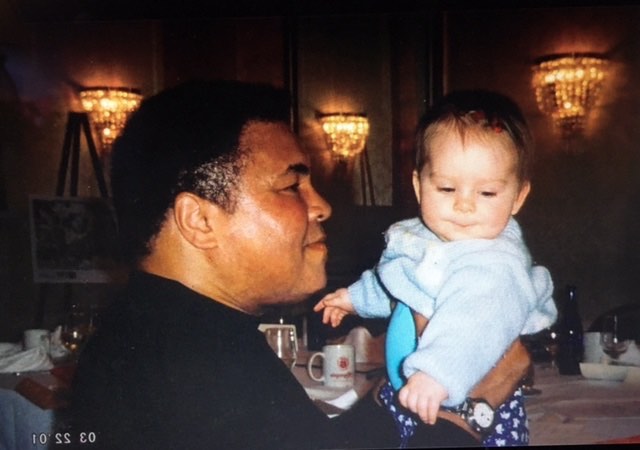 SHS Alumni Ellen Leerburger shared the following story about the time she spent with Muhammad Ali. Leerburger, a 1982 grad of SHS, is an Interpretive Exhibit Designer and project manager for museums around the country. She worked as a Senior Interpretive Director at Lee H. Skolnick Architecture + Design Partnership who was hired to design the Muhammad Ali Center building in Louisville, Kentucky as well as all its exhibits. Her mother Julie Leerburger taught English at Scarsdale High School for 29 years and still lives on Heathcote Road with her husband Dick.
SHS Alumni Ellen Leerburger shared the following story about the time she spent with Muhammad Ali. Leerburger, a 1982 grad of SHS, is an Interpretive Exhibit Designer and project manager for museums around the country. She worked as a Senior Interpretive Director at Lee H. Skolnick Architecture + Design Partnership who was hired to design the Muhammad Ali Center building in Louisville, Kentucky as well as all its exhibits. Her mother Julie Leerburger taught English at Scarsdale High School for 29 years and still lives on Heathcote Road with her husband Dick.
(from Ellen)
I have had the privilege of meeting or working with a good number of famous people or "celebrities" of one kind or another over my years in the museum world, but the time I spent with Muhammad Ali at his house in Berrien Springs, MI and in NYC as project manager creating the Muhammad Ali Center from 1999-2001 was, without question, the biggest highlight and the highest honor of my professional life. One of the best parts of my job has always been becoming an expert in whatever content is required for each job - whether it's the Hubble Space Telescope or Dinosaurs or Boxing and Ali's life from Louisville to the most recognized and respected man in the world. I knew nothing going in other than what anyone growing up in the 70s would know about a sports icon, but it was up to me and my colleagues to soak up every fact and nuance of his life and create the mission and spine of this (then) new museum and center for tolerance and humanitarianism. It was a formidable challenge.
It included many meetings with his wife, Lonnie Ali, and several with Muhammad including the three days my boss and I spent at his home in Michigan hanging out and interviewing him. I have so many memories of those days - his size, his gentleness, the twinkle in his eye, his non- stop magic tricks and jokes. One night, my boss, Lee, Lonnie, Muhammad and I went out for dinner at the local Italian restaurant. We were immediately noticed by all the patrons and, at first, everyone kept a respectful distance as we ate our meals. (Ali LOVED spaghetti and meatballs!) The second, the SECOND, our dessert plates had been cleared, the progression began and both then, and another time I was with him near Times Square, I have never witnessed anything like this. People (of all ages) didn't just come up to him and ask for an autograph or try to shake his hand. They hugged him, called him "Champ." They had tears in their eyes as they told Ali that he had changed their lives - there was none of that boundary that there usually is with "famous"' people. And he personally engaged with every single one. It took us forever to get out of that restaurant and even longer to walk a block in Manhattan. Everyone wanted to touch him, to share his space. It was remarkable.
Through much of the time I knew him I was pregnant with the (now) teen. Without fail, every time I saw him he asked how I was feeling, touched my stomach (without asking, but it was fine!) and asked when I was due. After my daughter Lanie was born, in July 2000, his was the first Tiffany's blue box to arrive with a beautiful spoon and a note that read, "Every child should be born with a silver spoon in her mouth. With love from Lonnie and Muhammad Ali."
Eight months later, I was meeting with him and our exhibit team at the Algonquin Hotel. In those days, my husband and I shared one cell phone (how did that ever work?) and he had it that day, but he was determined to bring Lanie meet Ali (we all know he was just dying to meet him, himself) so he lurked outside the hotel with Lanie in her stroller for I don't know how long. When we finally emerged into the lobby, Ali saw her, immediately grabbed her and held her like Mufasa and the baby Lion King. He was magical with babies. And he adored them.
I kept in touch with Lonnie for many years, emailing in January on Ali's birthday and providing updates of Lanie. It was an incredible professional and personal time. The concept of "Living Your Beliefs" so prevalent in our exhibit, was never more clear after getting to know him and his incredible story of humanity, rising above challenges and intolerance and speaking out for what's right - even at great cost. There's really never been anyone like him nor will there be.
I am devastated by the loss of this great man, but blessed for having known him for a brief time. Truly The Greatest of All Time.
Local Attorney to Serve 2-6 years for Grand Larceny and Tax Fraud
- Details
- Written by: Joanne Wallenstein
- Hits: 6255
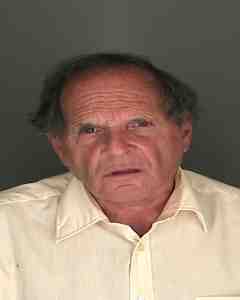 On June 8, Acting Westchester County District Attorney James A. McCarty announced that Michael Lippman (Date of birth 11/03/44) of 165 Falmouth Road, Scarsdale, (Yonkers PO), was sentenced to 2 to 6 years in state prison, following his guilty plea on FebGranruary 22, 2016, to:
On June 8, Acting Westchester County District Attorney James A. McCarty announced that Michael Lippman (Date of birth 11/03/44) of 165 Falmouth Road, Scarsdale, (Yonkers PO), was sentenced to 2 to 6 years in state prison, following his guilty plea on FebGranruary 22, 2016, to:
- one count of Grand Larceny in the Second Degree, a class "C" Felony,
- one count of Criminal Tax Fraud in the Second Degree, a class "C" Felony,
- one count of Scheme To Defraud in the First Degree, a class "E" Felony.
The defendant was also ordered to pay restitution for the 13 victims in the amount of $1,487,461.61. Additionally, the defendant must pay the NYS Department of Taxation and Finance $172,393.00.
Between January 1st, 2010 and September 15th, 2015, the defendant, at the time a licensed attorney in the State of New York, engaged in a scheme in which he deliberately defrauded multiple clients of monies entrusted to him for various purposes including the transfer of real estate and estate planning.
In one instance, the defendant is alleged to have stolen approximately $431,300.00 from a client which was intended to complete the purchase of a property.
In another instance the defendant is alleged to have stolen approximately $159,431.95 from another client. That money was intended to pay off a mortgage to forestall a foreclosure action on that client's property.
The investigation was carried out by investigators from the District Attorney's office along with the assistance of the New York State Department of Taxation and Finance.











